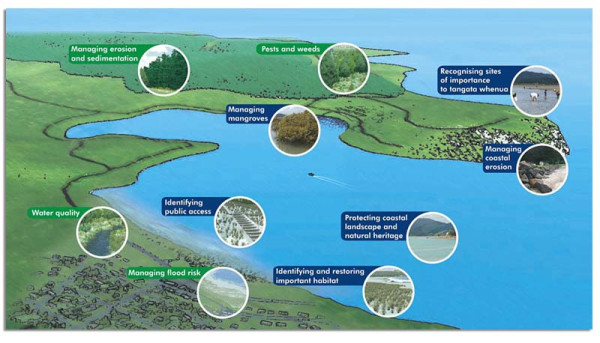
Our Whitianga office will be closed to the public on Friday 26 April. Our staff are still working and can be contacted via our freephone 0800 800 401.


Our Whitianga office will be closed to the public on Friday 26 April. Our staff are still working and can be contacted via our freephone 0800 800 401.


In 2007, Waikato Regional Council developed and asked for community feedback on the Draft Whangamata Harbour Plan and two supporting documents – the Draft Whangamata Catchment Management Plan and Whangamata Mangrove Management Options Report.
A number of issues were not resolved through the initial consultation process. As a result, a stakeholder forum was established, including representatives from:
In 2009 the stakeholder forum group reached agreement on the harbour and catchment plans, with the exception of the extent to which mangroves will be managed.
In July 2011, Waikato Regional Council’s river and catchment services group applied for resource consent to remove a limited number of mangroves from the harbour. The applications went through a notification, hearing and appeal process and have subsequently been granted, with a consent order and conditions issued by the Environment Court.
The harbour plan recognises that the land and harbour are connected – what we do on the land surrounding the harbour can affect the harbour's health. The extent and importance of key concerns and risks to the harbour are identified in the plan, and the actions needed to address them are outlined.
To address the issues identified in the harbour plan, the Whangamata Catchment Management Plan has prioritised specific land management, riparian enhancement and river and flood management works in the Wentworth, Waikiekie, Te Weiti and Otuwhete sub-catchments.
The primary aim of these works is to reduce the amount of soil eroding into the streams, leading to less sedimentation and infilling of the harbour. This will also help limit the places where mangroves can grow. There will be other benefits too, like more native plants, improved habitats for fish and insects and better water quality.
To ask for help or report a problem, contact us
Tell us how we can improve the information on this page. (optional)